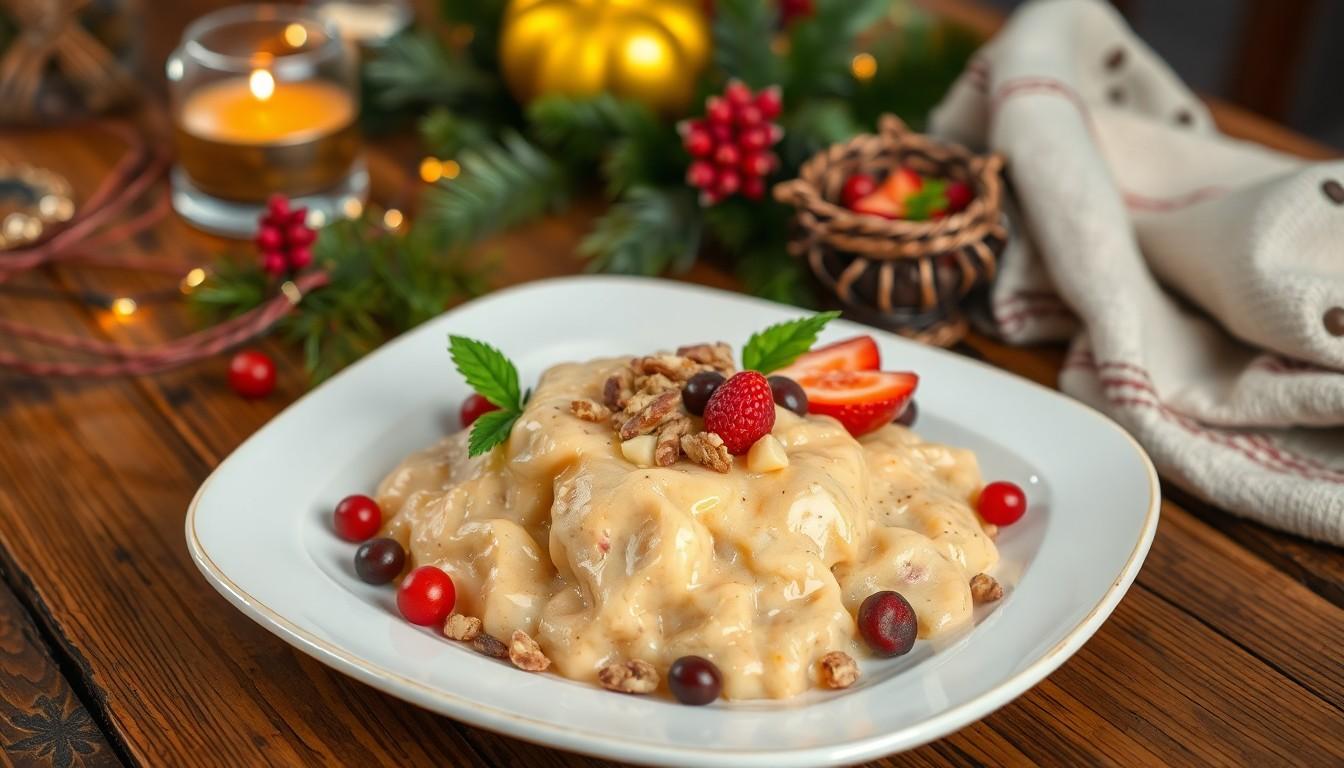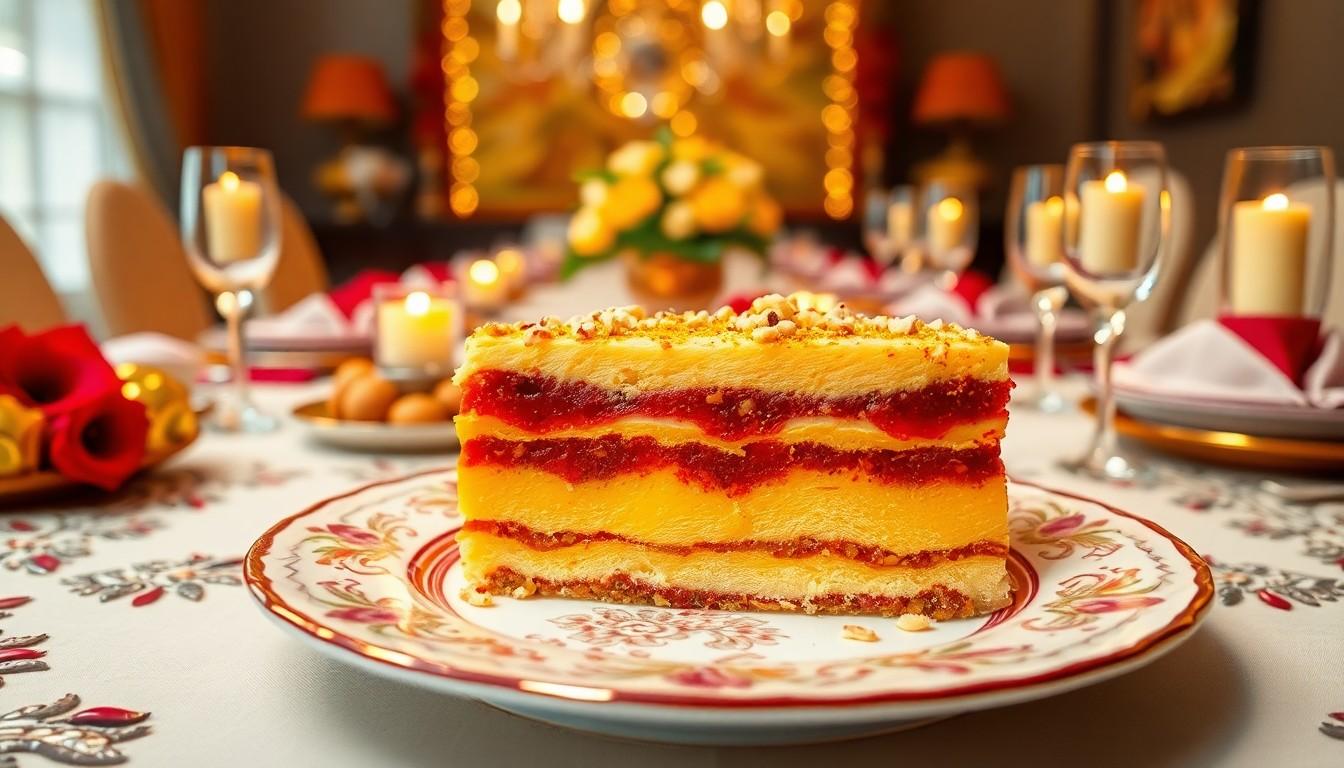Rasnkada, the delightful treat that’s got everyone buzzing, is more than just a sweet indulgence. It’s a culinary masterpiece that dances on the taste buds and makes taste buds sing! Originating from rich traditions, this dessert combines flavors and textures in a way that leaves a lasting impression.
Overview of Ranskada
Ranskada stands out as a beloved dessert in various cultures, celebrated for its rich flavors and intricate preparation. This dessert features layers of sweetened ingredients, often complemented by nuts, fruits, and aromatic spices. Many enjoy its creamy texture and vibrant colors, which enhance its visual appeal.
Traditionally, Ranskada incorporates milk, sugar, and ghee, creating a luscious base. Variations exist, depending on regional preferences or seasonal ingredients. In some recipes, saffron or cardamom adds a unique depth of flavor, elevating the dessert’s complexity.
Culinary enthusiasts often prepare Ranskada during festivities and special occasions, making it a centerpiece for gatherings. Its preparation typically involves meticulous steps, from simmering the milk to achieving the perfect consistency. Chefs honed their skills over generations, ensuring that classic techniques remain intact.
Enjoyment of Ranskada transcends cultural boundaries, uniting people through a shared appreciation of its taste. Patrons of this dessert often seek it out in local eateries or during community celebrations. Seasonal variations allow for creative interpretations, contributing to Ranskada’s enduring popularity.
Overall, Ranskada embodies both tradition and innovation, reflecting the culture and flavors from which it originates. This dessert not only provides a sweet indulgence but also represents a rich heritage, showcasing the art of dessert making across diverse culinary landscapes.
Cultural Significance of Ranskada

Ranskada holds deep cultural roots, reflecting the traditions and celebrations of various communities. This dessert is cherished not only for its flavor but also for its ability to bring people together during significant events.
Historical Background
Ranskada’s origins trace back to ancient times, where it emerged as a symbol of hospitality and celebration. Various regions claim its roots, showcasing adaptations that highlight local ingredients and flavors. Manuscripts from centuries ago reveal references to similar sweet dishes, emphasizing its long-standing popularity. Throughout history, Ranskada served both as a festive treat and a culinary art form, evolving with cultural shifts while retaining traditional methods. Recipes passed down generations illustrate the rich heritage associated with its preparation.
Contemporary Usage
In modern times, Ranskada remains a staple at festivals, weddings, and family gatherings. Diverse variations have emerged, catering to regional preferences while staying true to its original essence. Chefs often experiment with innovative twists, incorporating seasonal ingredients and contemporary flavors. Social media has popularized Ranskada, inspiring home cooks to share their unique takes on this classic dessert. Its presence in culinary events reflects a blend of tradition and modernity, ensuring Ranskada’s cherished status continues across cultures.
Benefits of Ranskada
Ranskada offers numerous benefits, from its nutritional value to its potential health advantages. This dessert not only pleases the palate but also supports dietary needs.
Nutritional Value
Ranskada contains essential ingredients like milk, ghee, and sugar, contributing to its nutritional profile. Milk provides protein and calcium, which support bone health. Ghee, made from clarified butter, contains healthy fats essential for energy and nutrient absorption. Sugar, while contributing to sweetness, also offers a quick energy source. Including nuts and fruits enhances the dessert’s nutrient density, offering vitamins, minerals, and antioxidants. A carefully prepared Ranskada can deliver a balanced nutritional profile beneficial for various diets.
Health Benefits
Ranskada can serve as a comforting food during specific occasions and provide emotional well-being. The combination of milk and healthy fats promotes satiety, which may aid in controlling hunger. Nuts offer heart-healthy fats and antioxidants that benefit cardiovascular health. Consuming this dessert in moderation can provide a satisfying treat without excessive guilt. Ingredients like saffron, often added for flavor, boast antioxidant properties that enhance overall health. Enjoying Ranskada during festive gatherings fosters community and emotional connections, contributing to social health.
Ranskada in Cuisine
Ranskada features prominently in culinary traditions across various cultures. This delightful dessert finds its way into numerous traditional dishes that highlight its rich flavors.
Traditional Dishes
Traditionally, Ranskada appears in festive meals and special occasions. Many cultures serve it alongside savory dishes, balancing the meal with its sweetness. Regional recipes often showcase variations, incorporating local ingredients like seasonal fruits and nuts. For instance, in some regions, saffron might enhance the flavor, while others prefer cardamom for a distinct aroma. Dishes featuring Ranskada often reflect a sense of community and celebration, with families passing down recipes through generations. Celebratory platters frequently include Ranskada as a centerpiece, signifying hospitality and joy.
Modern Recipes
Modern interpretations of Ranskada showcase creativity in the kitchen. Innovative chefs experiment with fusion recipes, integrating contemporary flavors like chocolate or matcha. Ranskada pairs well with alternative ingredients such as plant-based milk, appealing to diverse dietary preferences. Some home bakers create layered desserts that blend Ranskada with mousse or cake, enhancing texture and flavor. Unique presentations, including individual servings in jars, make this dessert visually appealing. Social media influences these contemporary recipes, inspiring cooks to share their versions, thus expanding the reach and appreciation for Ranskada in today’s culinary landscape.
Conclusion
Ranskada continues to enchant dessert lovers with its rich history and diverse interpretations. Its ability to bring people together during celebrations highlights its significance in various cultures. As culinary enthusiasts experiment with traditional recipes and modern twists, Ranskada remains a beloved staple at gatherings and festive occasions.
This delightful dessert not only satisfies the palate but also fosters emotional connections, making it a cherished treat across generations. With its blend of tradition and innovation, Ranskada is poised to maintain its esteemed status in the culinary world for years to come.

